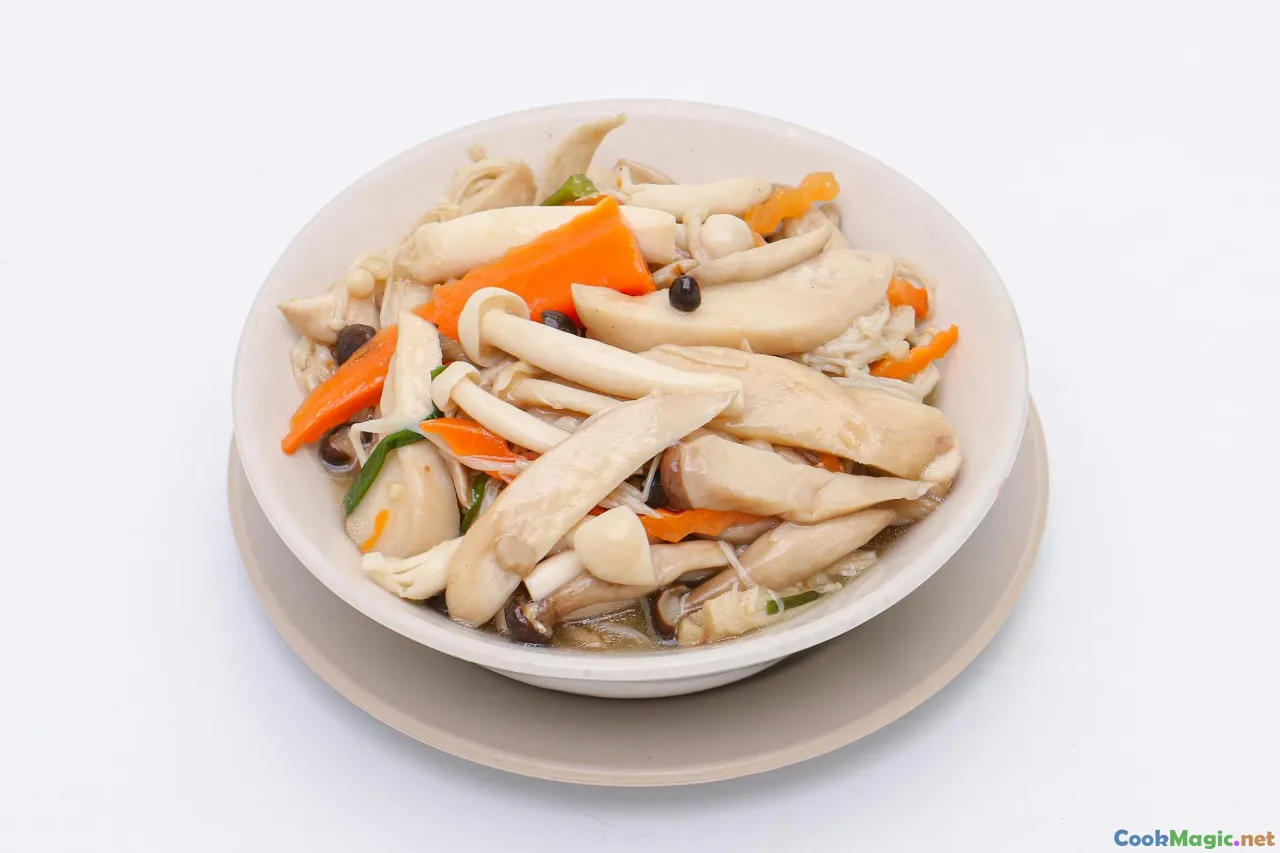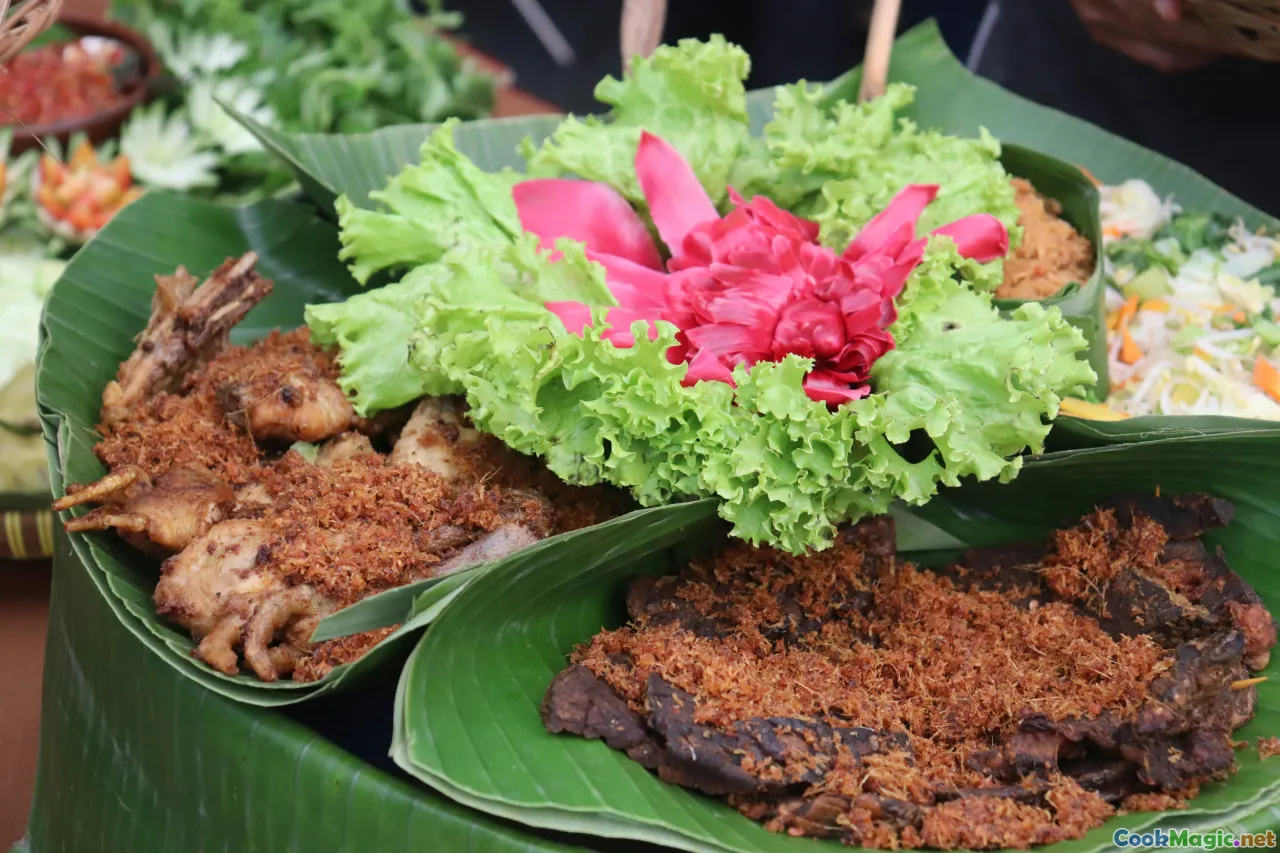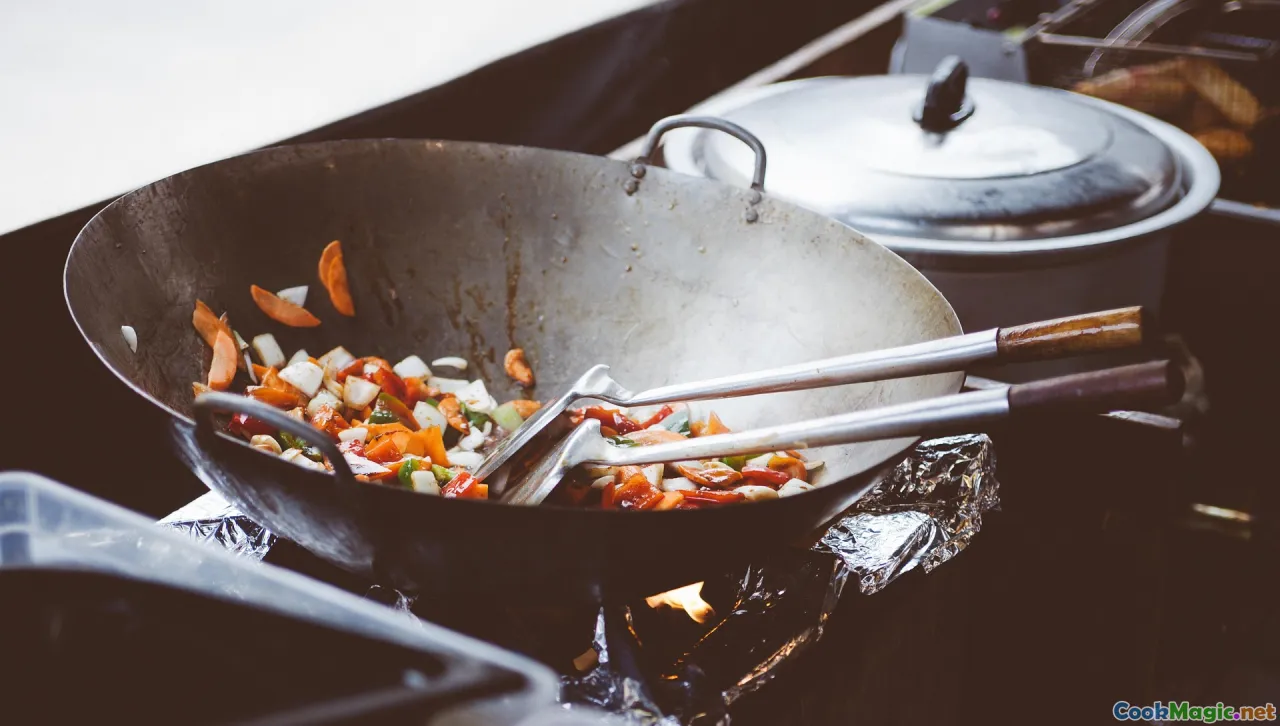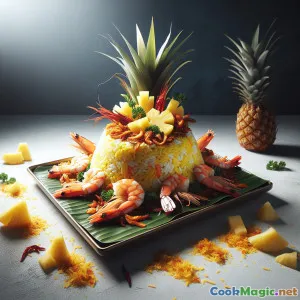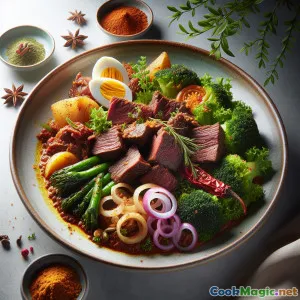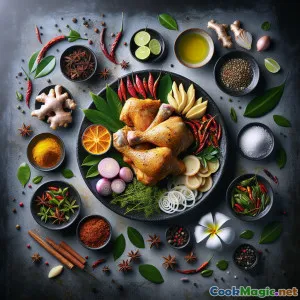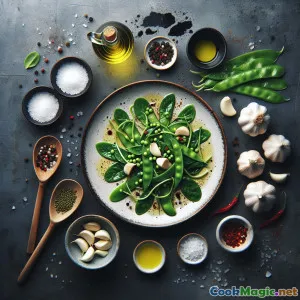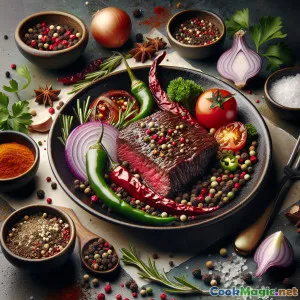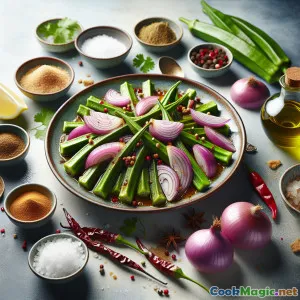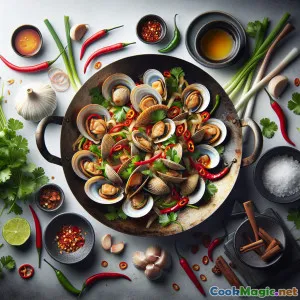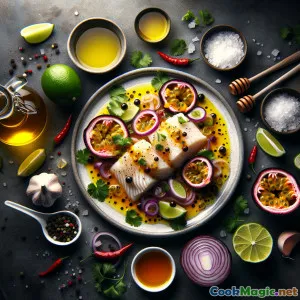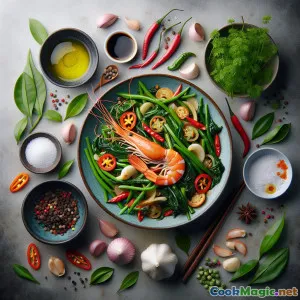
Fougère de la Jungle de Bornéo : Délice Sauvage Sauté
(Borneo Jungle Fern: Stir-Fried Wild Delight)
(0 Avis)0
792
juillet 21, 2025
Signaler un problème
Ingrédients
-
200 grams Jeunes pousses de fougère de la jungle (pucuk paku)
(Wash thoroughly. Substitute with fiddlehead ferns if unavailable.)
-
3 small Echalotes
(Tranché finement)
-
2 cloves Gousses d'ail
(Écrasé ou haché)
-
1 piece Piment rouge
(Deseeded and sliced; adjust to preference)
-
80 grams Crevette d'eau douce fraîche
(Peeled and cleaned; omit for vegetarian)
-
100 ml Bouillon d'anchois
(Or chicken/vegetable broth)
-
1 tbsp Sauce soja
(Use light soy for seasoning)
-
1/4 tsp Sel
(Season to Taste)
-
1/8 tsp Poivre blanc
(À votre goût)
-
2 tbsp Huile de cuisson
(Preferably peanut or vegetable oil)
(Wash thoroughly. Substitute with fiddlehead ferns if unavailable.)
(Tranché finement)
(Écrasé ou haché)
(Deseeded and sliced; adjust to preference)
(Peeled and cleaned; omit for vegetarian)
(Or chicken/vegetable broth)
(Use light soy for seasoning)
(Season to Taste)
(À votre goût)
(Preferably peanut or vegetable oil)
Nutrition
- Portions: 2
- Taille de portion: 1 bol (300g)
- Calories: 175 kcal
- Carbohydrates: 16 g
- Protein: 9 g
- Fat: 7 g
- Fiber: 5 g
- Sugar: 4 g
- Sodium: 670 mg
- Cholesterol: 38 mg
- Calcium: 68 mg
- Iron: 3.1 mg
Instructions
-
1 - Prepare Fern and Ingredients:
Thoroughly rinse fern shoots; cut into 5cm segments. Clean, slice, and set aside shallots, garlic, and chili. Prep prawn, if using.
-
2 - Aromatics Sauté:
Heat oil in a wok over medium. Add shallots and garlic; stir-fry until aromatic and lightly golden.
-
3 - Add Chile and Seafood:
Add in sliced red chili and prawn pieces. Stir fry rapidly for one minute, infusing the oil.
-
4 - Introduce Ferns:
Increase heat; tip in the cut fern shoots. Toss briskly to coat in the fragrant oil.
-
5 - Season and Steam:
Pour in anchovy stock, add soy sauce, salt, and optional white pepper. Stir fry for another minute, then cover to steam for 1 minute until just tender but still vibrant.
-
6 - Finish and Serve:
Remove lid, toss again, taste and adjust seasoning. Serve hot as a side or main with steaming rice.
Thoroughly rinse fern shoots; cut into 5cm segments. Clean, slice, and set aside shallots, garlic, and chili. Prep prawn, if using.
Heat oil in a wok over medium. Add shallots and garlic; stir-fry until aromatic and lightly golden.
Add in sliced red chili and prawn pieces. Stir fry rapidly for one minute, infusing the oil.
Increase heat; tip in the cut fern shoots. Toss briskly to coat in the fragrant oil.
Pour in anchovy stock, add soy sauce, salt, and optional white pepper. Stir fry for another minute, then cover to steam for 1 minute until just tender but still vibrant.
Remove lid, toss again, taste and adjust seasoning. Serve hot as a side or main with steaming rice.
En savoir plus sur: Fougère de la Jungle de Bornéo : Délice Sauvage Sauté
Borneo Jungle Fern Stir Fry: An Adventure on a Plate
A Journey to the Rainforest
The Borneo Jungle Fern Stir Fry, also known in local dialects as “Pucuk Paku Goreng,” is more than an average meal—it is an exhilarating march through lush equatorial jungles, distilled into vibrant, edible art. The featured hero is the edible fern shoot, abundant in the riverbanks and lowlands of Borneo’s magnificent rainforest, representing both the culinary heritage and ecosystem of the region. Burstingly green, with a subtle, earthy flavor and crisp bite, jungle fern brings a relevance and sense of place rarely found in world cuisine.
Cultural Resonance and Origins
On the island of Borneo—shared by Malaysia, Indonesia, and Brunei—the jungle is both protector and provider. Indigenous groups like the Iban and Dayak have relied on the forest’s wild bounty for millennia, foraging ferns at the onset of the wet season or after the customary burn. The ferns, usually of the Diplazium esculentum or Stenochlaena palustris genera, are harvested in youthful, fistful coils called fiddleheads or 'pucuk.'
Stir-frying with locally caught fresh river prawns and often anchovy stock is a way of honoring both the land and water’s bounty. This preparation employs minimal oil and high heat to protect the verdant hue and snap—distinctly different from the protracted simmering associated with leafy greens elsewhere.
Culinary Aspects and Tips
The dish calls for only a brief cook—overdoing it results in wilted, mushy shoots, so speed with precision is key! Thai or Vietnamese fiddlehead ferns can replace the Bornean variety if you’re foraging beyond Southeast Asia. The prawns lend subtle sweetness, but the dish sings just as well in vegetarian hands—opt instead for full rich mushroom stock or a pinch more soy sauce.
Soy sauce and fresh aromatics—garlic, shallots, and chili—bring savory balance, while the stories written on each plate evoke centuries-old retreat to mist-wrapped village kitchens. Peanut oil is traditionally favored for flavor, but any neutral, high-heat oil works just as well.
Serving Suggestions
Dished up beside fragrant steamed rice and perhaps with sambal belacan at the side, this stir fry happily steps up as a shared side or a vegan main. Households often feature this simply alongside grilled fish or chicken. The texture of the greens—between delicate asparagus and crisp green beans—pairs beautifully with other punchy Southeast Asian flavors.
Nutritional Value
Low in calories but packed with fiber, vitamins, and antioxidants, jungle fern is not just delicious but part of Borneo communities’ longevity. A serving supplies a surprising portion of your daily iron and calcium—a thunderous bonus considering how delicate it seems on the plate. The addition of prawns raises the protein count while keeping the dish light. Those watching sodium can use low-salt soy or limit stocks.
Personal Thoughts, Uniqueness, & Sustainability
My favorite aspect of this recipe is its wildness. It is both humble and intensely exotic; each bite is at once familiar, reminiscent of spring asparagus, and at the same time bold with earthy jungle notes. Cooking Borneo Jungle Fern Stir Fry is using taste to travel—the sort of food experience that builds connection to a place and its people, even half a world away.
And from a sustainability point of view, foraging wild greens encourages biodiversity and honors indigenous green knowledge about what is abundant and edible. (Do, of course, make sure to correctly identify edible species if foraging!) The dish itself is flexible, tying together harvested proteins, simple aromatics, and wild produce—a fitting tribute to both the local palate and the richness of the land.
Conclusion & Serving Notes
To make this at home, be bold: seek fiddlehead ferns at Asian markets, or substitute with other crisp, green wild or farmed shoots. And dare to stir-fry with joy gust. With every aromatic sizzle and every jewel-green fern frond, let your imagination meander the Borneo rainforest canopy, sitting at a rustic wooden table imbued with adventure and ancient wisdom.
Suitable as a standout dish for dinner parties, adventurous home cooks, or anyone wishing to meet nature at the table—this is a plateful of stories and wild spirit, forged in a simple wok in twenty minutes or less.

